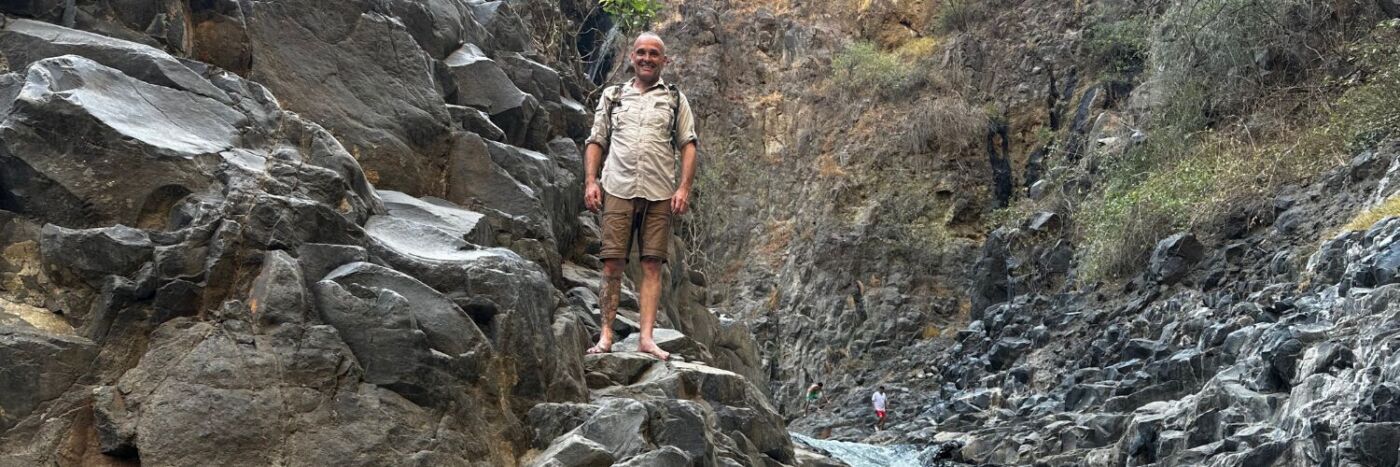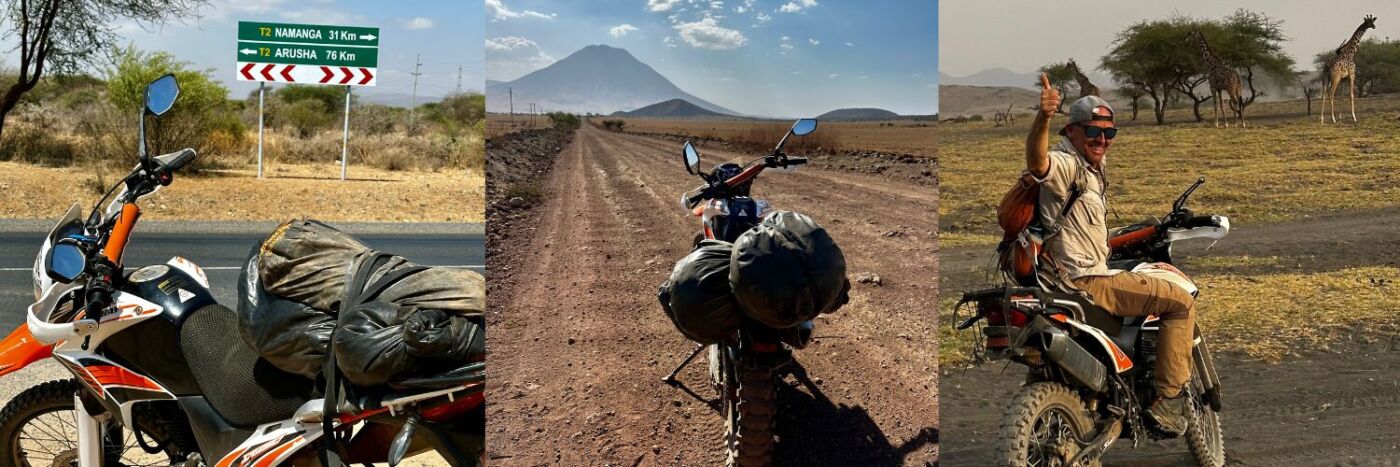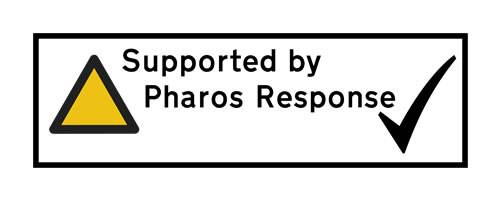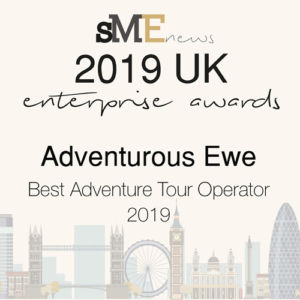Beyond the Summit: Exploring Northern Tanzania on Two Wheels
By Jim, Founder & Director of Adventurous Ewe
Following a successful Kilimanjaro Trek with 10 incredible Adventurous Ewe trekkers, ranging in age from 23 to 65, I decided to stay on in Tanzania a little longer. The climb had been truly special as every single person reached the summit, and the sense of pride, determination and togetherness with the local team was something really special.
I never tire of being on this mountain. No matter how many times I’ve climbed Kilimanjaro, it still rocks me. Watching people push through doubt, exhaustion and altitude to stand on that Roof of Africa – it’s emotional, still as powerful for me now as it was on my very first expedition.
With 6 days spare and a growing curiosity to explore more of the region, I decided to set off on my own small adventure – part personal journey, part reconnaissance. I wanted to see more of the landscapes and people that make this corner of East Africa so extraordinary, to find places our future trekkers might one day experience. East Africa has always felt like a second home to me, thanks entirely to the warmth of the people here and this was my chance to get to know it even better.
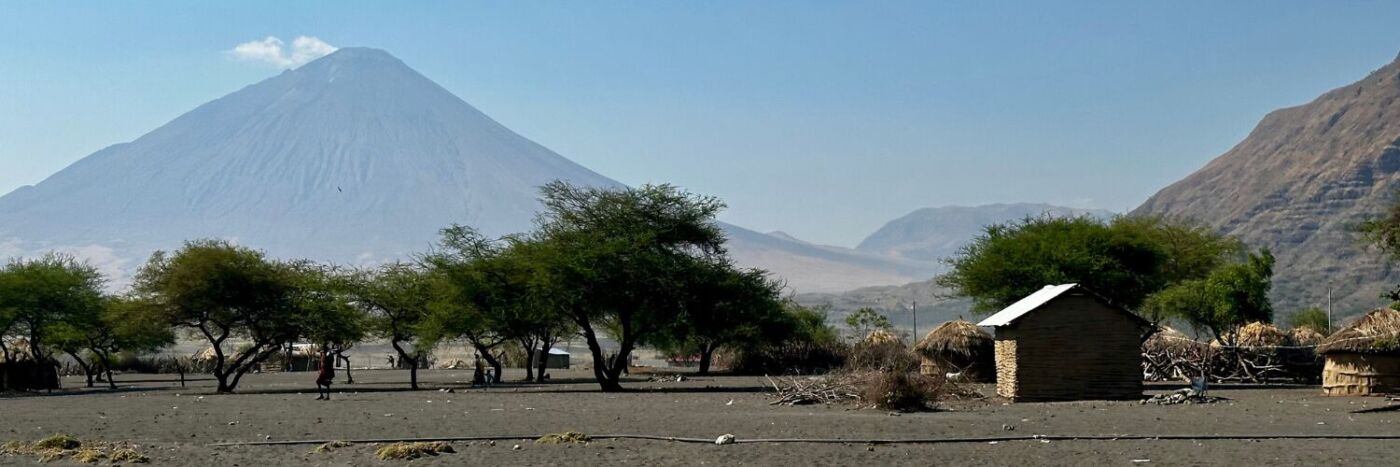
The Road Less Travelled
I’ve spent years leading trips all over the world, from the High Atlas to the Himalayas, but this time I wanted to do something different. I’d always dreamt of riding a motorbike across East Africa and after talking to the brilliant team at Moshi Easy Riders, I decided this was the moment. They helped plan the route, prepped the bike, and before I knew it, I was loading up my gear and trying not to overthink what I was about to do.
I had two routes in mind: head east to the Usambara Mountains and down to the coast at Bagamoyo, or venture inland into the Maasai lands of Lake Natron, a place I’d first heard about 25 years ago and always wanted to visit. After a lot of thought (and a bit of gut instinct), I chose Lake Natron. I figured if I was going to do this, I may as well do it properly.
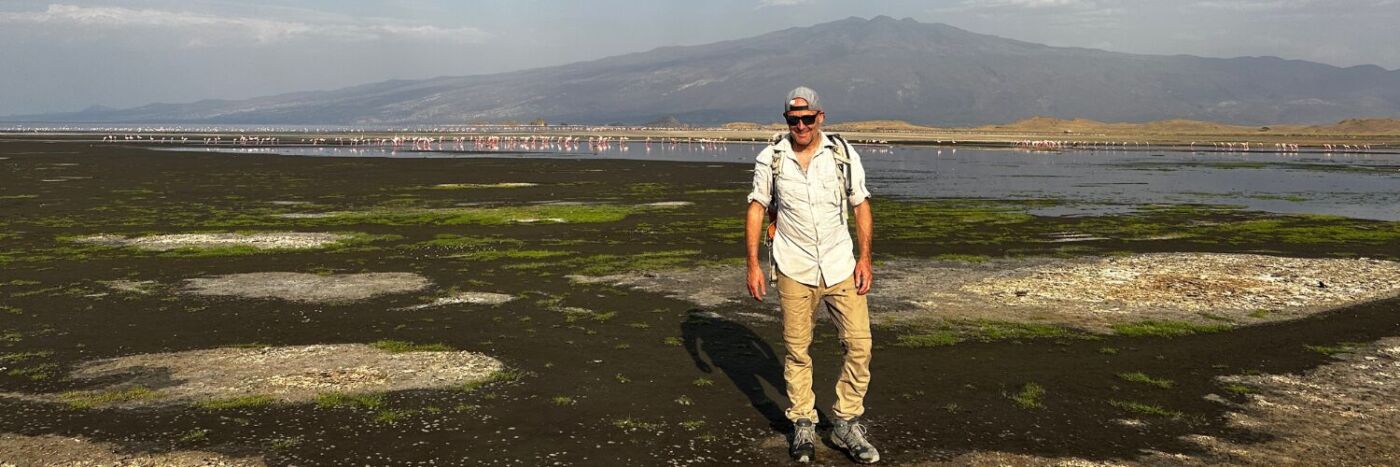
The Ride Begins
I left Moshi Town around 4pm and rode out towards West Kilimanjaro, following the same region where our Lemosho Route climb begins. The first evening’s stop was Simba Farmhouse, a fourth-generation working farm perched on Kilimanjaro’s foothills. It was one of those rare places that immediately feels right – great food, incredible hospitality, and views that stretch forever. I camped under the stars, filled my belly, and felt that familiar buzz of adventure again.

The next morning, after a fresh farmhouse breakfast, I packed up the tent and hit the road. My plan was to cut across the country on dirt and gravel tracks to Longido, and it turned out to be a cracking ride with good roads, open skies, and the occasional zebras and giraffes strolling across the plains.
In Longido, I stopped for chapati and sweet chai in a wooden roadside café, surrounded by Maasai men in red shúkàs. It was simple and brilliant – that mix of good food, friendly faces, and a small bit of bike maintenance (turns out I’d picked up a nail in the tyre, quickly sorted with the help of the locals). It was one of those moments you can’t plan for, but you remember forever.
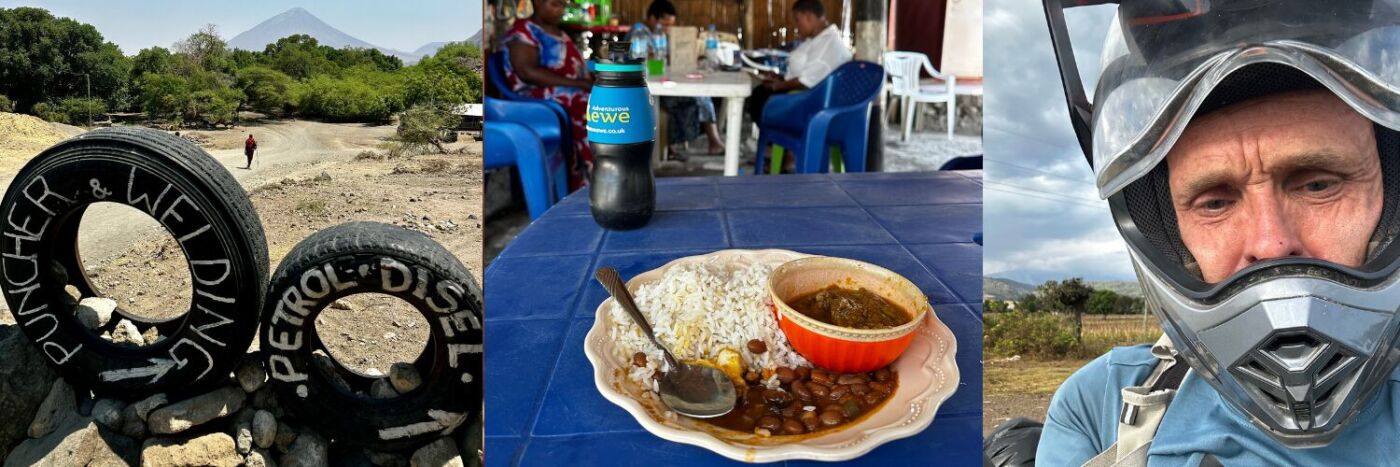
Into the Wild
From Longido, the road turned rough, much rougher than I’d imagined. I’d heard the track to Lake Natron wasn’t great, but this was next-level: endless corrugations, deep gravel, and stretches where I saw only three vehicles all day.
But what a ride. The landscape opened up into vast grasslands scattered with tiny Maasai villages. As the sun dipped lower, the outline of Ol Doinyo Lengai, the sacred volcano of the Maasai, appeared on the horizon. Its symmetry was mesmerising – it really does look like how you would draw a perfect mountain.
By the time I rolled into Lake Natron, both the bike and I were ready for a rest.

Life at Lake Natron
On arrival, I paid the community permit and National Park fee, then checked into a community-run Maasai camp for $25 a night. It was an amazing set up with barrel tents, grassy lawns, a swimming pool, Wi-Fi, a bar, and freshly made meals. The best part was knowing the money stayed within the local community.
Unfortunately, the rear shock absorber on the motorbike didn’t survive the journey in. The guys back at Moshi Easy Riders were absolute legends as they sourced a brand new shock in Arusha and sent it to the campsite on the local bus. Not many places in the world that you could do that!

While waiting, I met Dennis, a local Maasai who ran the village petrol store, and we quickly became mates. Over the next 3 days, we explored together – hiking up the escarpment at sunrise to watch the light break over the plains and Lengai, wading through canyons to a hidden waterfall, and riding out to the Soda Lake – its mirror-like surface alive with the pale pink shimmer of flamingos. We even spotted zebra and other game along the way.
Spending time with the Maasai community, hearing their stories, and simply being part of the rhythm of life out there was something really special. Lake Natron still feels like one of those rare places – remote, raw, and real.
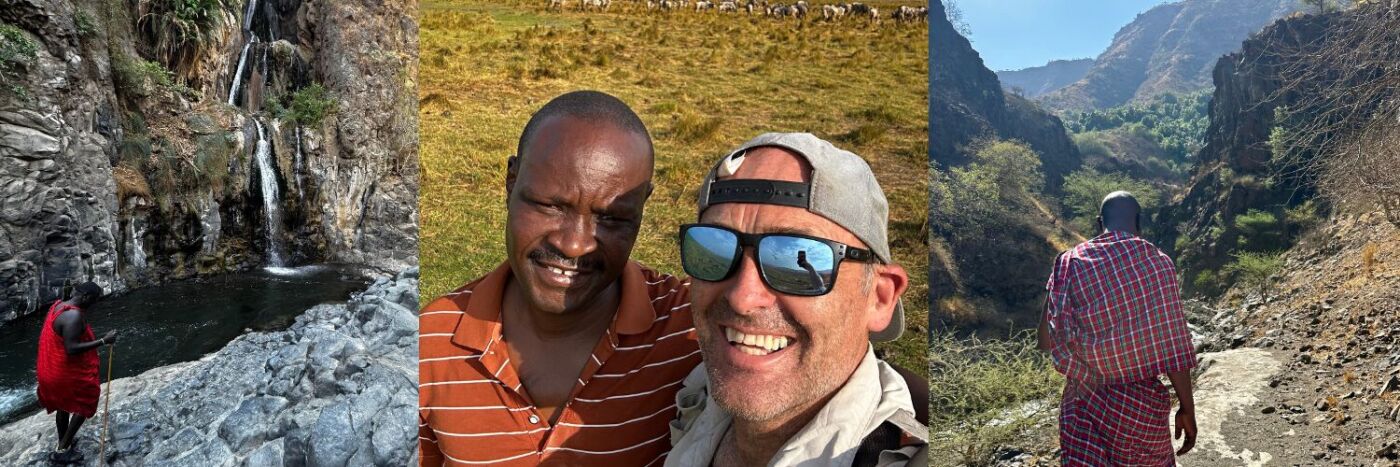
Back on the Road
Once the bike was fixed, I set off again, heading south towards Mto wa Mbu (which means “Mosquito River”). I stopped along the way for fuel – sold in litre bottles from tiny roadside shacks and took in those iconic East African scenes: Maasai herding cattle against the backdrop of vast plains and towering escarpments.
When I last visited Mto wa Mbu 20 years ago, it was a sleepy village with a curio shop and a soda stall. Now it’s a lively hub with good roads, cafes, and travellers passing through. It’s amazing to see how much has changed, and how much hasn’t.
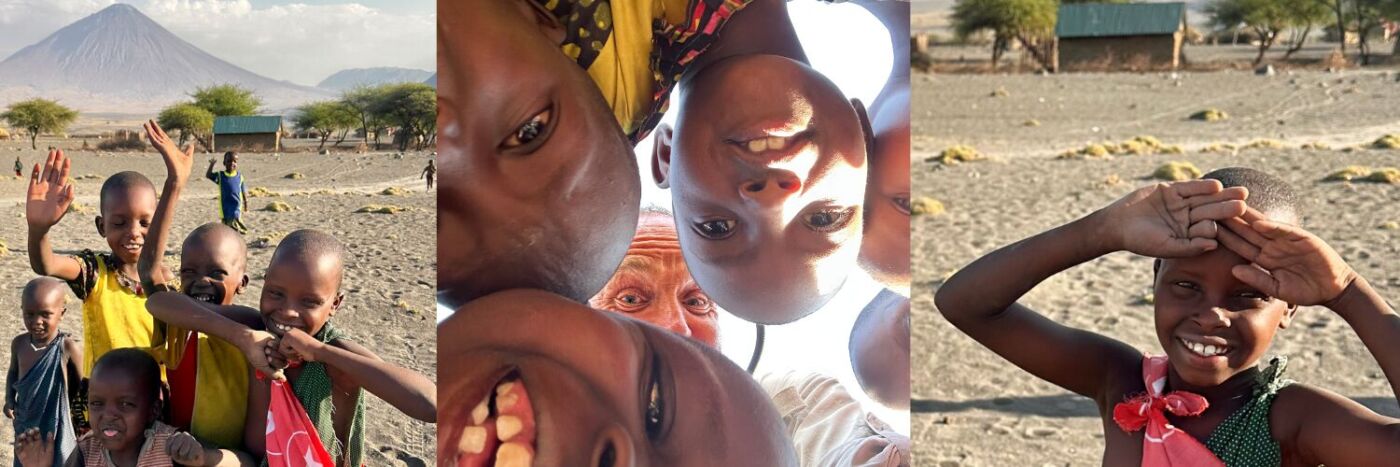
From there I hit the tarmac for the final leg to Meserani Snake Park, a place I first visited in the mid-90s when I was an Overland Guide and as chance would have it, my wife Sue has also spent time there in the 90’s (small world). It was great to see “Ma” again – the same incredible woman running the camp and supporting local Maasai communities through the Snake Bite Clinic. The clinic provides free treatment, food, and care to anyone bitten by a snake in Tanzania. Seeing the new equipment and improvements being made there was brilliant.
The evening at Meserani was exactly what I love about travel – overlanders swapping stories at the bar, volunteers chatting about water-harvesting projects, and locals drifting in and out. Just real, human connection with no wifi or digital distractions. Just great chat.
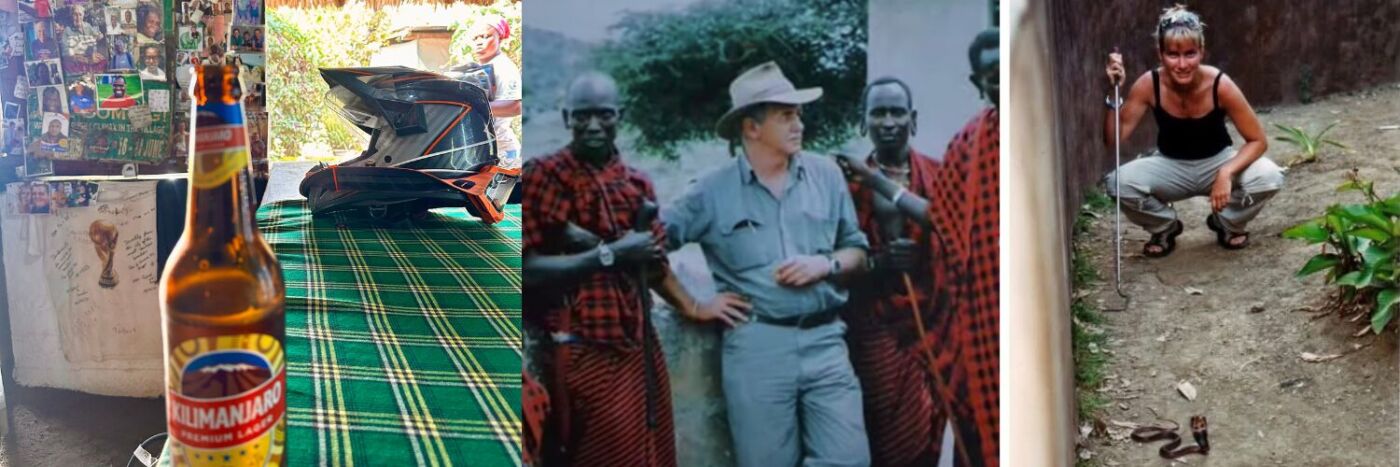
Reflections from the Saddle
Looking back, this trip was something I’ll never forget. I’ve set up and led adventures all over the world – cycled across Zambia and Malawi, trekked through the Arctic, the Andes, and beyond – but this was my first solo motorbike trip, and in Africa.
I’ll admit, I was very nervous before leaving Moshi. As I strapped the bags to the bike, I kept wondering what on earth I was doing. But after a couple of hours on the road, the fear faded. The rhythm returned. It felt right.
When the bike broke down, that nervousness flooded back – but I had what I needed: food, water, a tent, and time. It reminded me that even after years of guiding, it’s good to step into something new, to feel uncomfortable again. That’s the essence of adventure – to question yourself, to adapt, and to keep going. That’s where the magic happens.
Being forced to slow down in Lake Natron waiting for the spare part, this turned out to be one of the best parts of the journey. It gave me time to stop rushing, to sit in the café with locals, drink chai, chat, and just be there. It’s a reminder that sometimes the best travel moments happen when you stop moving and really live in the moment.
I was glowing most of the way home, both inside and out. Motorbike kit and Tanzanian sunshine are a beasty combo. However, hot, dusty, tired, yet utterly content. It was a massively rewarding trip and one that’s reminded me how important it is to keep exploring, keep learning, and keep pushing yourself.
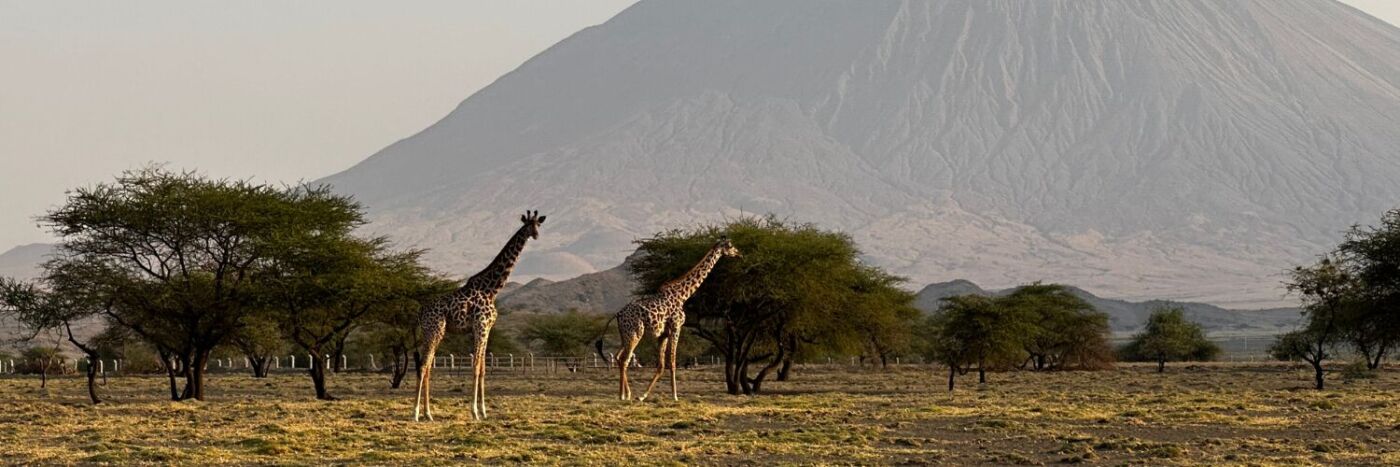
What’s Next
This ride has sparked all sorts of ideas for future Adventurous Ewe extensions in Tanzania – from exploring deeper into Maasai lands and visiting Lake Natron, to creating more chances for trekkers to connect with local communities beyond the mountain. Along the way, I’ve made some incredible friends; the kind you don’t see coming but who change your journey completely. For that, I’ll always be grateful.
And as for me – well, there’s still the Usambara Mountains to explore. Maybe next time?
Until then, I’ll remember this trip for what it was: one man, one motorbike, and the reminder that adventure doesn’t always need a big plan – just the courage to start the engine and go.
Jim
Founder & Director
